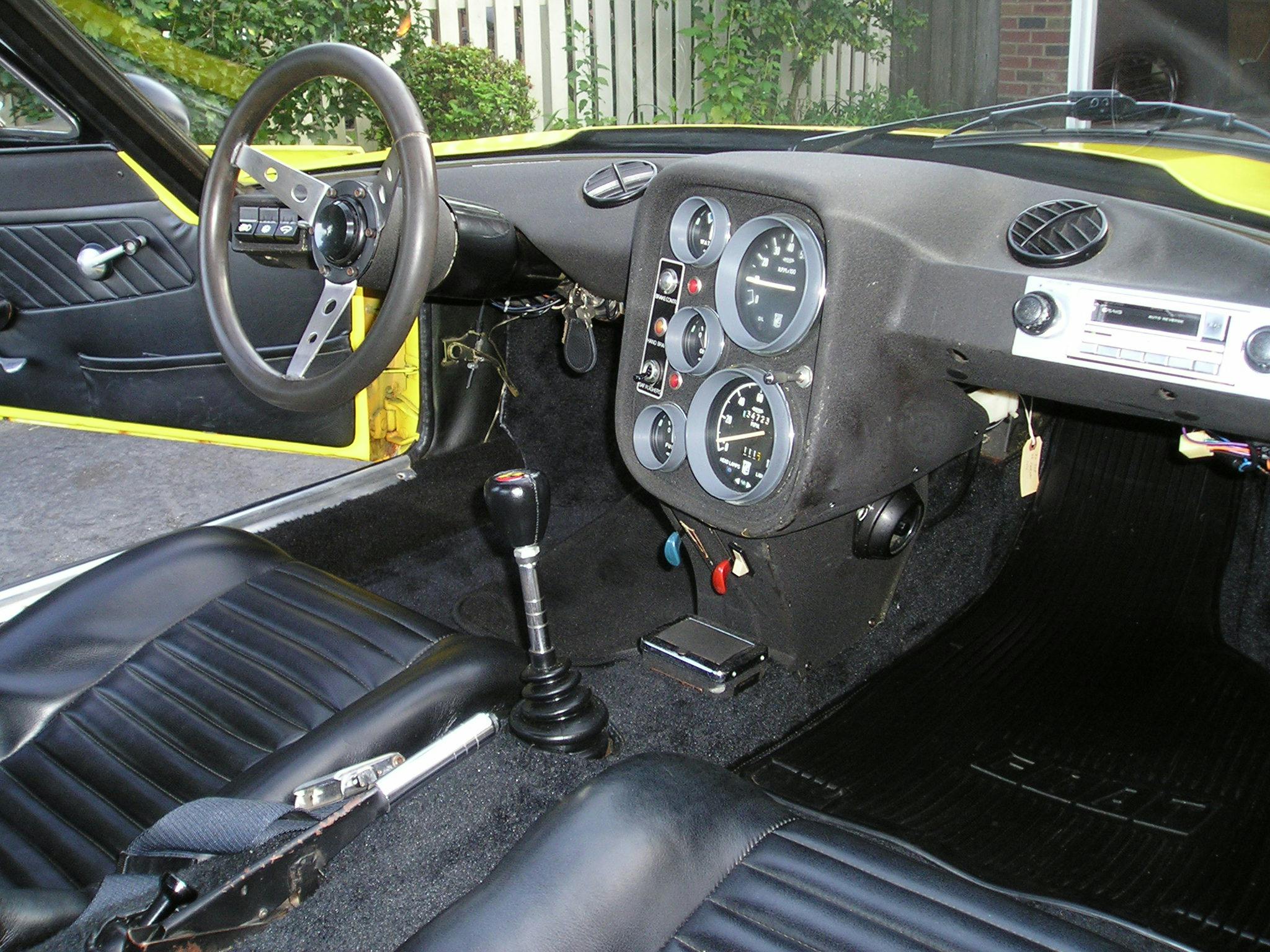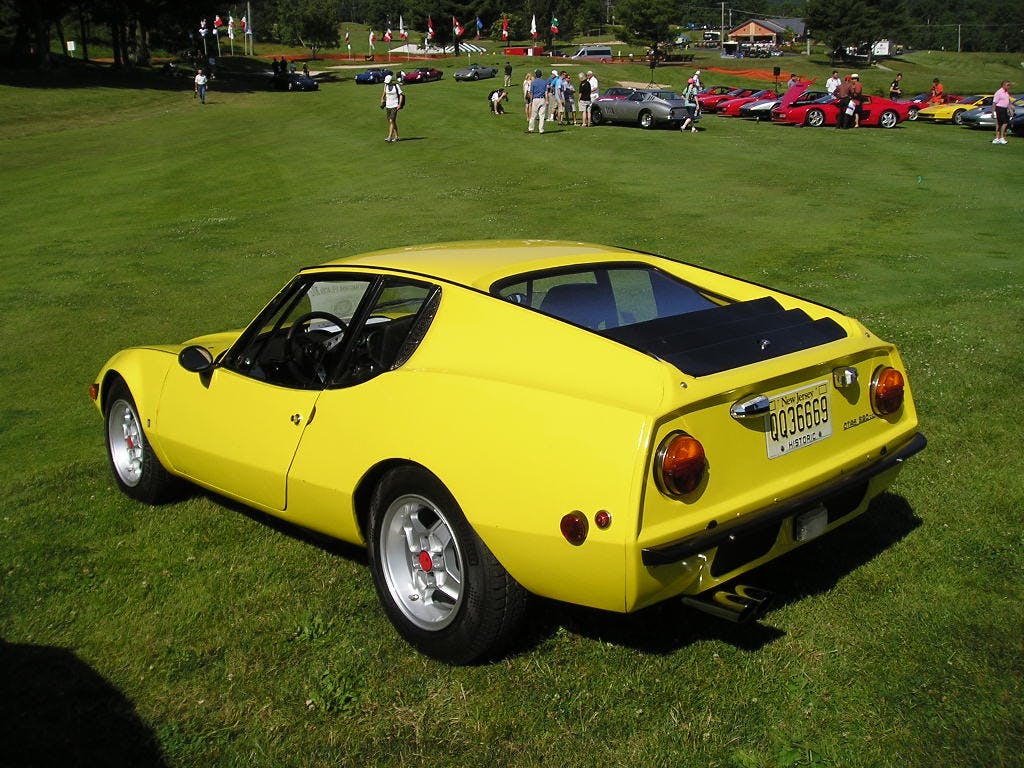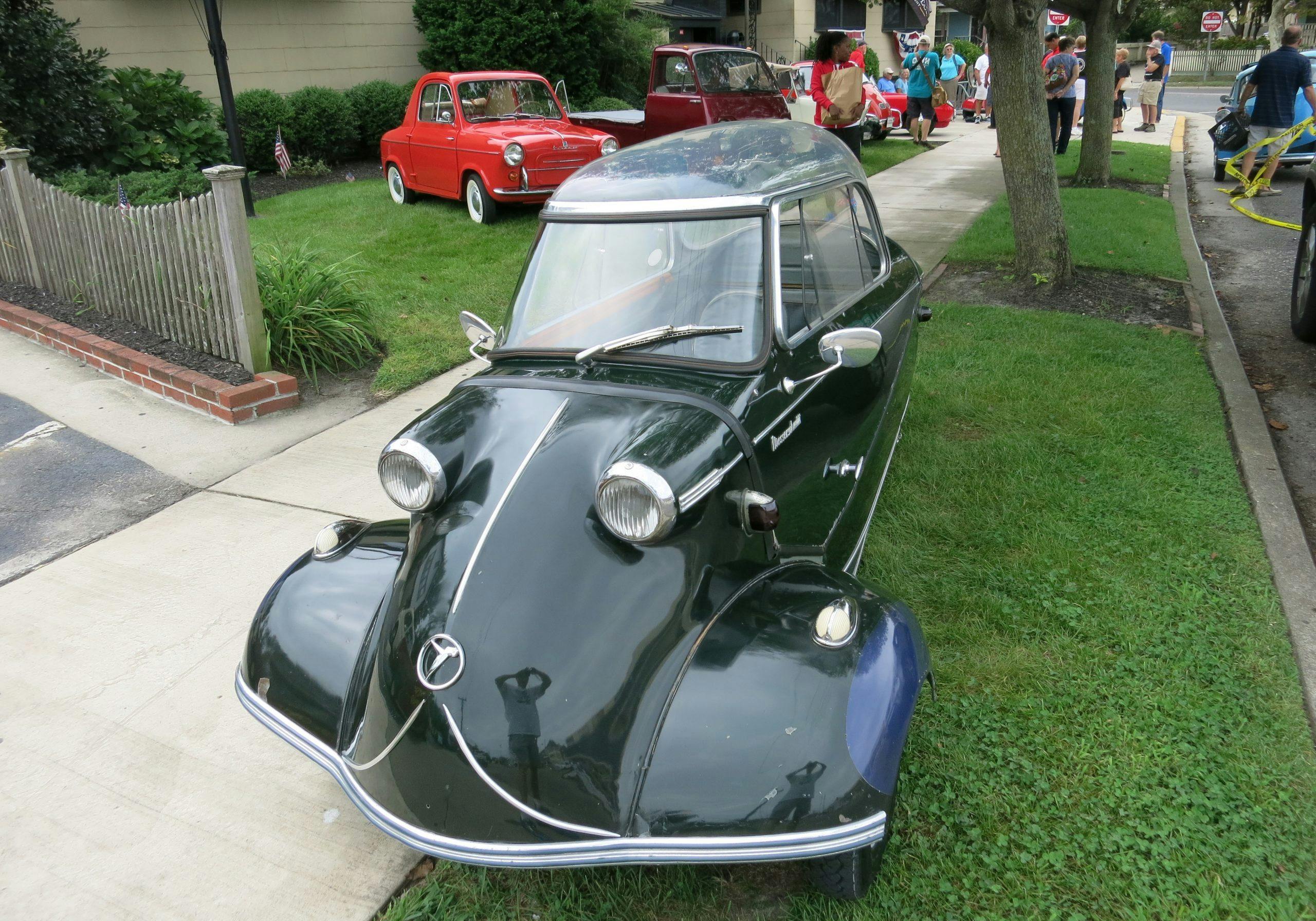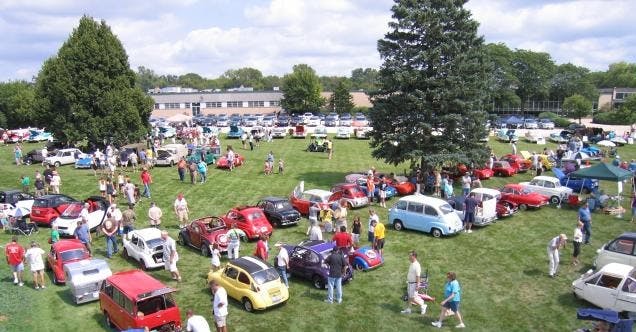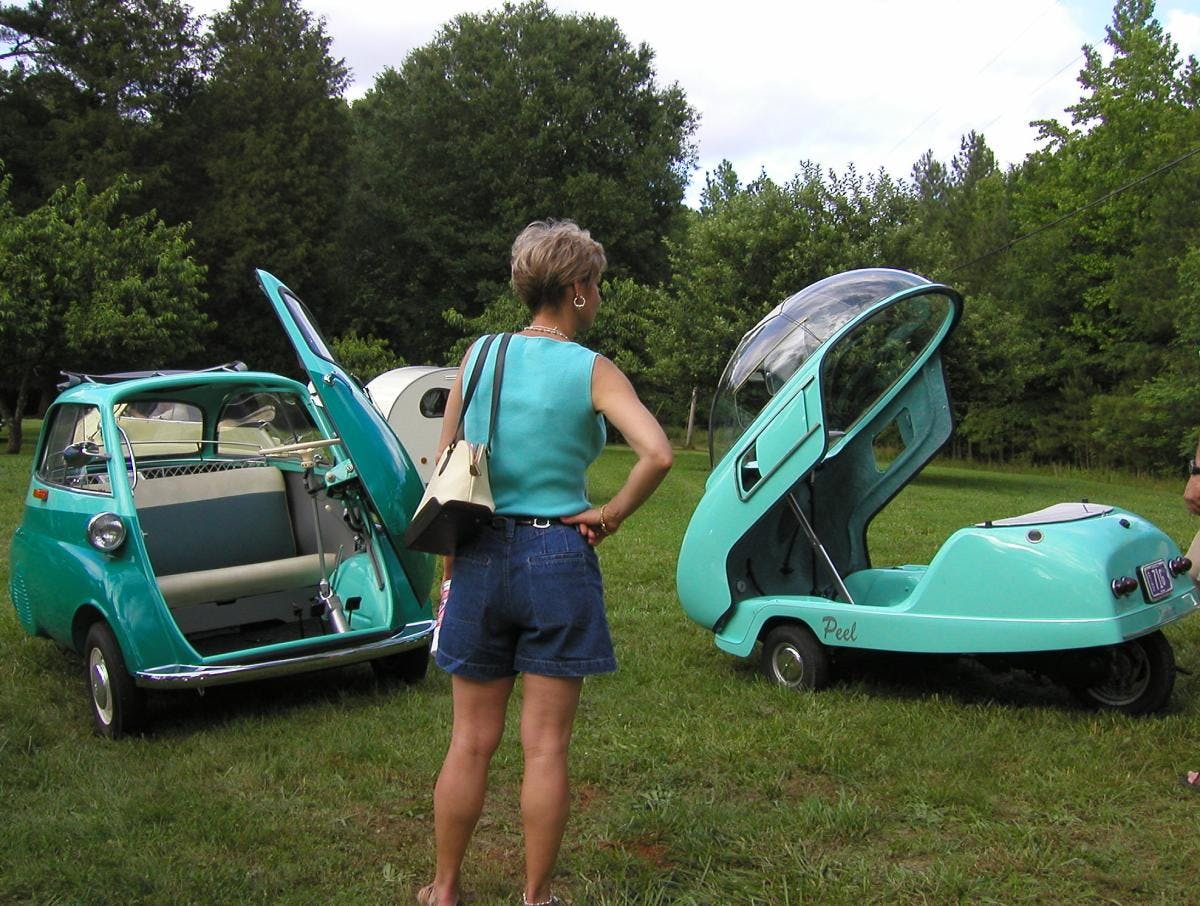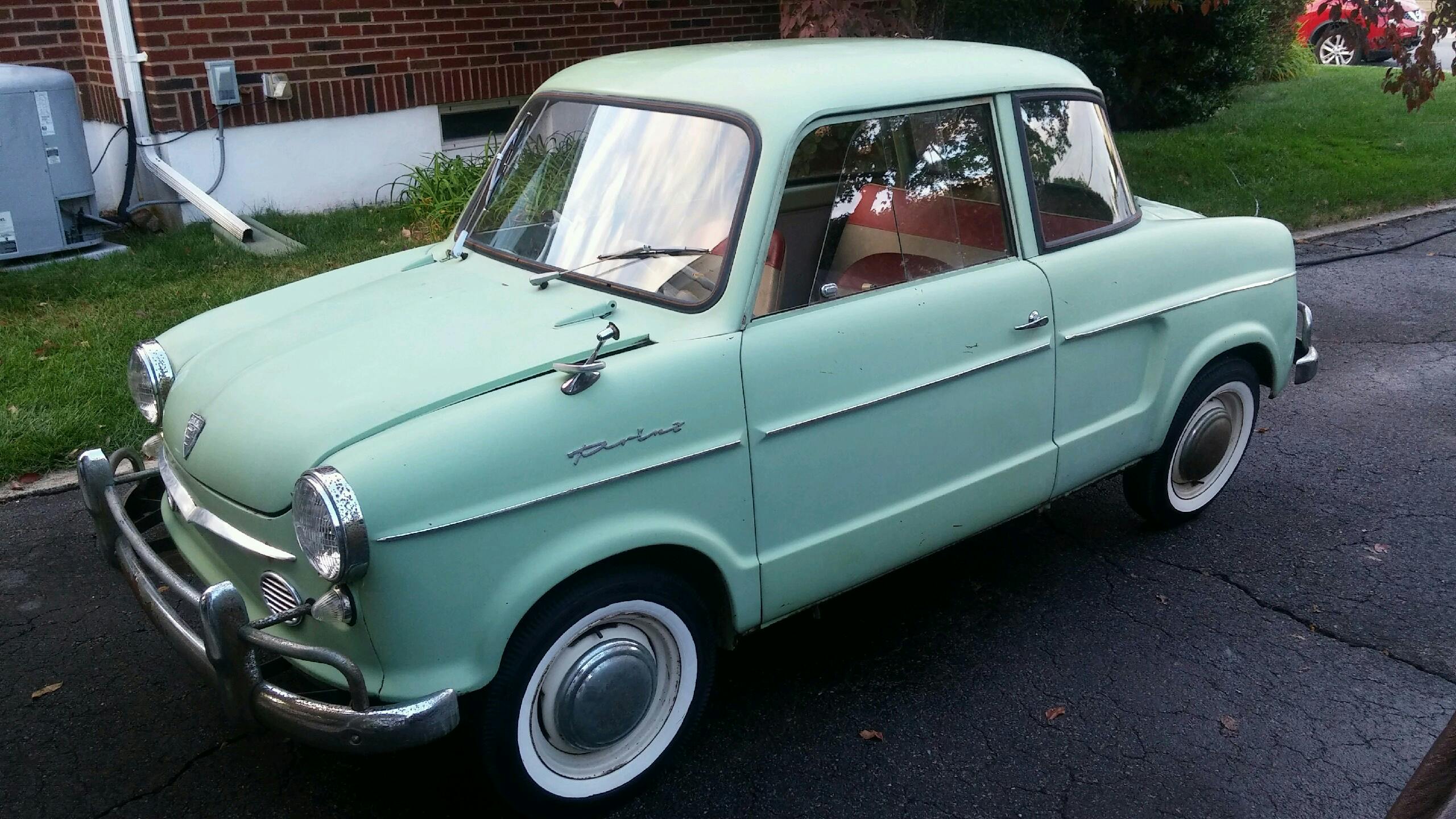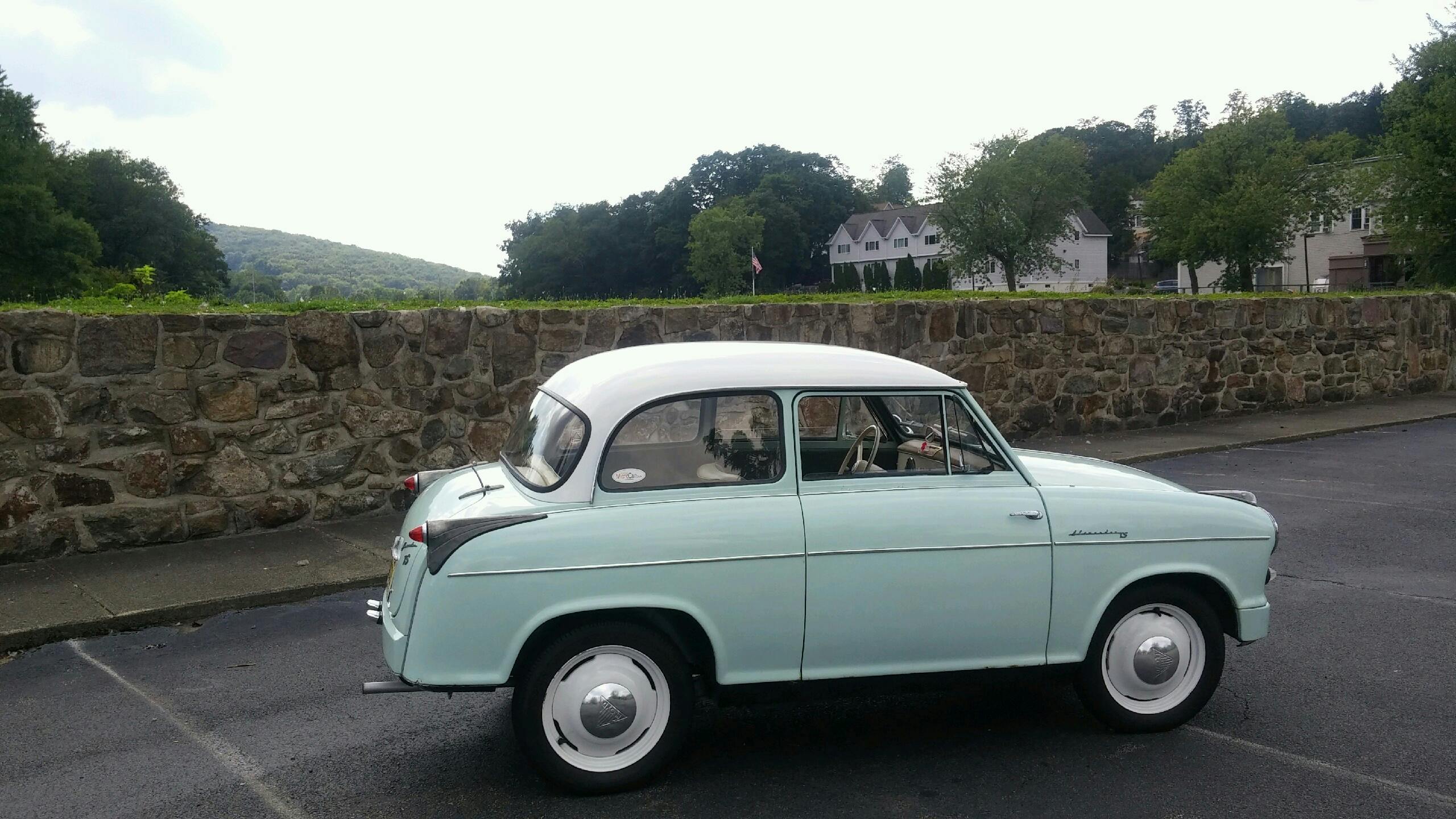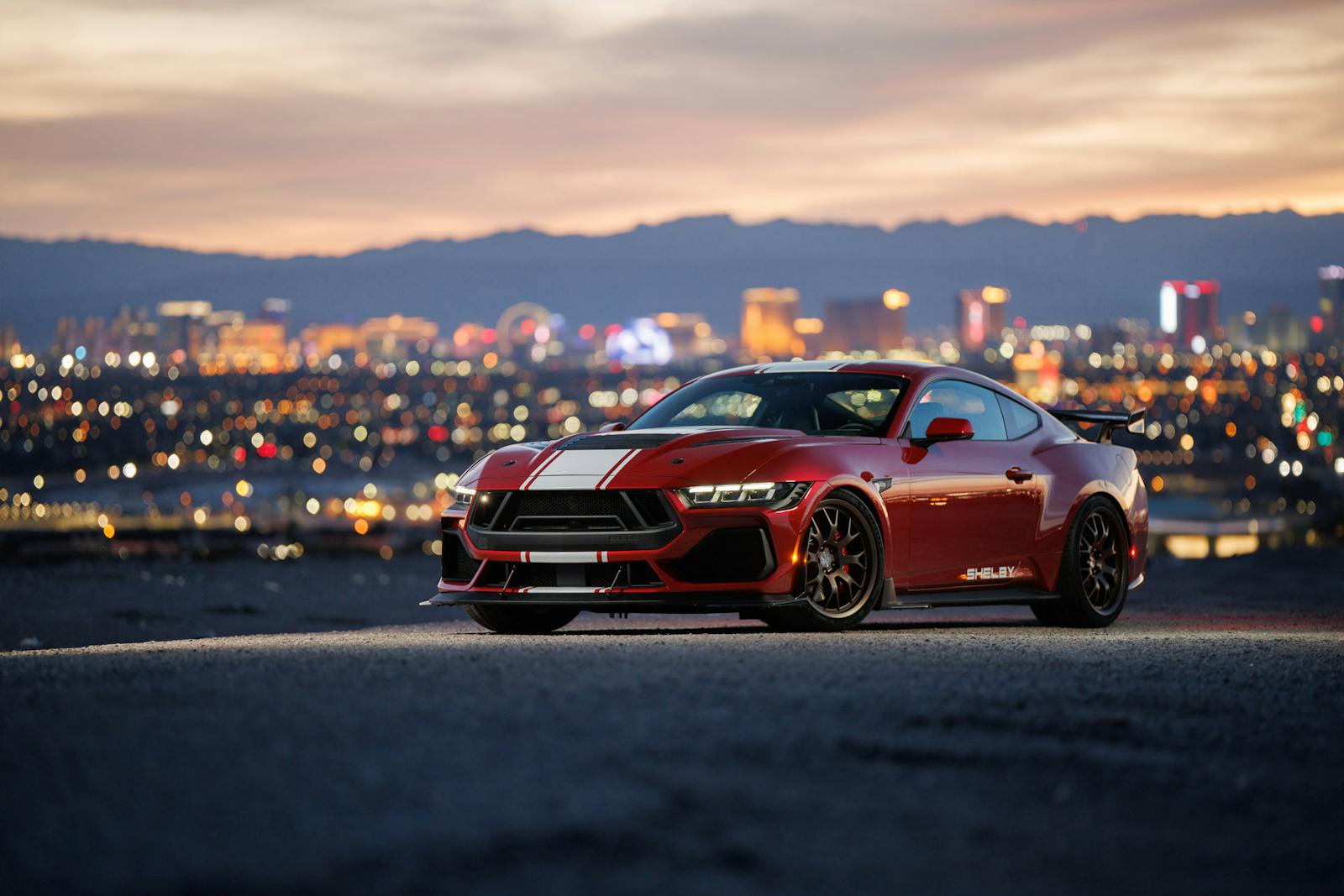New “bubble car” club celebrates those diminutive rides of the 1950s and ’60s
In the years following World War II, Germany’s industrial base was in ruins. Those manufacturers that were able to function were limited in what they could build; companies such as BMW and Messerschmitt were forbidden from manufacturing airplanes and aero engines. From this landscape emerged microcars—also referred to as “bubble cars”—miniature transportation devices that were little more than enclosed scooters. In fact, the name for them in German is Kabinenroller, which literally translates as “cabin roller” or enclosed scooter. Powered by one- or two-cylinder air-cooled engines with less than 500 cubic centimeters of displacement and three or four wheels, they helped put the country back on wheels and provided much needed jobs for a workforce desperate for employment.
The cars have a dedicated following here in the States; recently, the MicroMini Car Club was created to promote these ingeniously engineered and constructed personal-transportation devices. “Our club’s mission is to preserve the interest, use, repair, and collecting of diminutive vehicles,” says Burt Richmond, the MMCC’s vice president. “We’ll be holding a number of regional and national shows in 2021 for club members to share their love of both microcars and mini cars.” Microcars, Richmond explains, have less than 500 cubic centimeters of displacement, while mini cars have engines with displacements between 501–1000 cubic centimeters (see examples of both here).

Richmond’s love of microcars goes back to 1952, when a family friend donated a 1939 Crosley convertible for Richmond and his brother to use on the family farm. Richmond proceeded to wreck the car soon after and learned how to repair cars by wrenching on it. “I still haven’t gotten over my love for small-displacement cars,” he says. “I’m 5-foot-6, and I don’t like big cars or big motorcycles, so these cars fit me.” His first purchase of a mini car was in 1968, when he bought a Citroën 2CV—commonly referred to as a Deux Chevaux. Over the intervening years, Richmond estimates that he has owned more than 500 cars, including many more 2CVs, a 1922 Morgan Three Wheeler, a number of Fiat 500 Topolinos (Italian for “little mouse,” as well as the Italian name for Mickey Mouse), and Messerschmitts.
“Micro and mini cars are so friendly and accessible,” Richmond says. “And in terms of pure enjoyment, nothing gets more attention and smiles per mile than these vehicles.”
Fellow enthusiast and club officer Rob Maselko agrees. “I’ve been fascinated by these cars for 60 years, starting in 1961 when I was five-years old and saw a commercial on TV for Parliament cigarettes,” he recalls. “Someone was smoking a cigarette and driving around the streets of London in this tiny car with a bubble canopy, and my jaw dropped. I could name every car on my block, but I had never seen one of these.”

The mystery car would go unidentified for four years, when Maselko saw a copy of Motor Trend magazine, in which the car was identified as a Messerschmitt. In 1969, 13-year-old Maselko was spending a Saturday afternoon as he often did, riding his bike to the car dealers around his suburban home in New Jersey. “There on the back lot of the VW dealership was this tiny car with a BMW badge on it; beneath that in script was ‘Isetta,’ and the whole front of the car was the door,” he says. “I marched into the dealership and talked to the owner, Lake Underwood, and told him I wanted to buy it.” Underwood informed Maselko that his son owned the car and intended to restore it. “I gave him my name and phone number and asked him to call me if the son decided to sell it.”
In 1970, Maselko wrote a letter to the editor of Road & Track magazine, announcing that he was forming a club for Heinkel, Messerschmitt, and Isetta owners. The magazine published his letter, and he heard from Marilyn Felling of Topanga, California—together they started the Heinkel-Messerschmitt-Isetta Club. “I gave the club that name because those were the only micro cars I knew existed,” he explains. “Later, I would find a book in the reference section of my local library that introduced me to the wider world of tiny cars.” In 1972, Maselko bought his first micro car, a 1956 BMW Isetta. In the spring of ’73, Lake Underwood—the VW dealer he’d spoken to four years earlier—called him and said he could have the Isetta if he still wanted it. The HMI Club closed in 1985 after a successful run; over the intervening years, Maselko assisted with the formation of various other clubs for microcars and mini cars, and he acquired a number of both.

Today, Maselko’s fleet consists of three microcars: a 1956 Messerschmitt KR-200 (with a 200-cc, one-cylinder two-stroke engine), a 1959 Lloyd Alexander TS (with a 600-cc SOHC transverse-mounted twin-cylinder, front engine, front-wheel drive), and a 1961 NSU Prinz 40 (with a 600-cc SOHC transverse-mounted twin-cylinder, rear engine, rear-wheel drive). He also has a mini car, a 1970 OTAS 817 Grand Prix, which is no. 35 of just 65 examples imported to the U.S.
“I love their appearance of these cars and how they make people smile whenever they see one on the street,” Maselko says. “The designers were sitting down with a blank piece of paper and coming up with interesting solutions to the challenge of getting postwar Germany back on wheels. The ergonomics are excellent. Designers didn’t use computers, they just intuitively figured out where the controls should go.
“And they are so usable. Last summer I put 100 miles on my Messerschmitt going to a show, and it performed beautifully. It’s a testament to its design that all these years later, it can still be driven as it was intended.”
If you’re interested in learning more about these cleverly designed conveyances, you can join the MicroMini Car Club for a $20 annual membership fee. Benefits include an online-only newsletter with announcements of future shows and events, restoration profiles, how-to articles, classified advertisements for cars and parts, and parts wanted. The club’s first Micro/Mini Car World Meet is planned for June 18–19, 2021, at The Gilmore Museum, located in Hickory Corners, Michigan. Get event information here.

